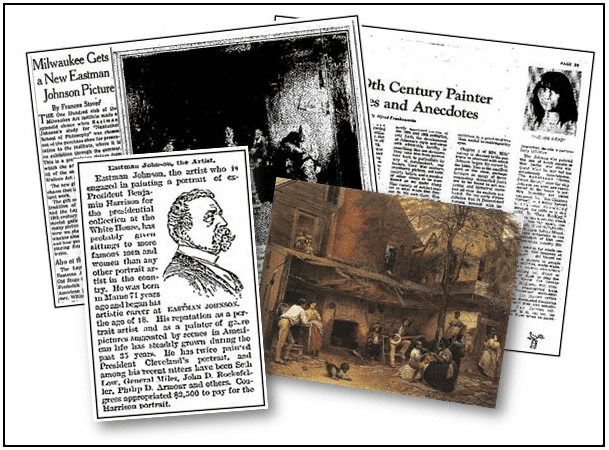Jonathan Eastman Johnson (1824-1906) was born in Lowell, Maine, and died in New York City. According to Wikipedia, he was better known as Eastman Johnson and was called “The American Rembrandt in his day” – and he was my cousin.

A search in GenealogyBank’s Historical Newspaper Archives shows that there are over 2,000 articles about his life and artistic career. Many of the articles speak to the specific paintings, portraits and other works that he created.
Newspapers are a good way to get the details behind his paintings and learn who acquired them over the years.

“Born in Lovell, Maine, Eastman Johnson moved to Washington, D.C., in 1845, when his father accepted a major clerkship in the Navy Department. Eastman established his portrait career by drawing members of the Maine legislature and U.S. Senators. More formal training commenced at the Royal Academy in Düsseldorf and with history painter Emanuel Leutze. This was followed by four years in The Hague, the offer of an appointment as court painter to William III of Holland, and a few months with Thomas Couture in Paris in 1855. Johnson subsequently became a successful portrait and genre painter in New York, as distinguished as many of his patrons.
“In addition to painting New York subjects, Johnson established a studio on Nantucket, shortly after his marriage in 1870, where he lived and worked during summers over the course of thirty years. His paintings of island cranberry harvests and maple sugar gathering in Maine transformed these familiar scenes into fine and popular art, creating a national awareness of extant but vanishing rural life in these New England places. The popularity of Johnson’s scenes of rural labor in New England marks them as part of the widespread impulse to assign values identified with New England—independence, resourcefulness, devotion to hard work—to the entire nation.”
Source: Smithsonian American Art Museum
Do you have artist relatives?
Tell us more about them.
